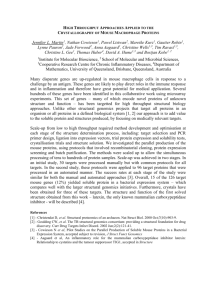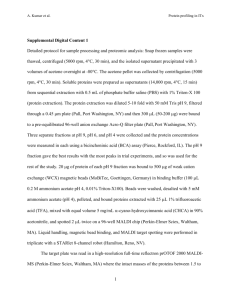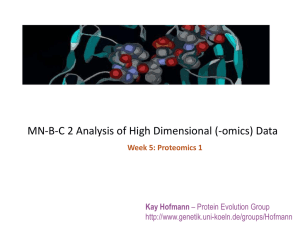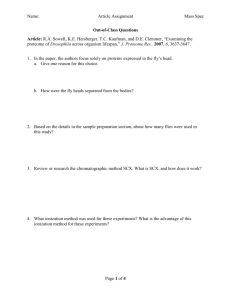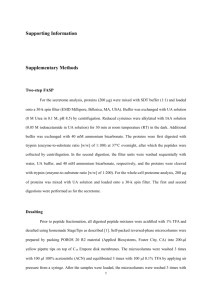pmic12120-sup-0007-SuppInfo
advertisement
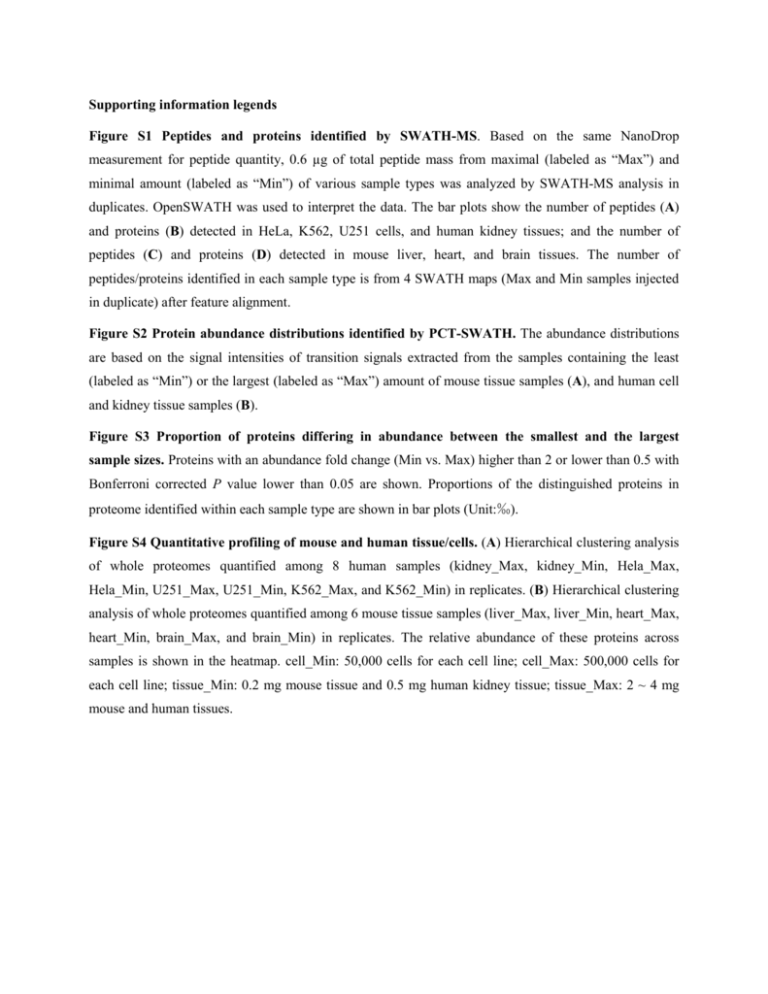
Supporting information legends Figure S1 Peptides and proteins identified by SWATH-MS. Based on the same NanoDrop measurement for peptide quantity, 0.6 µg of total peptide mass from maximal (labeled as “Max”) and minimal amount (labeled as “Min”) of various sample types was analyzed by SWATH-MS analysis in duplicates. OpenSWATH was used to interpret the data. The bar plots show the number of peptides (A) and proteins (B) detected in HeLa, K562, U251 cells, and human kidney tissues; and the number of peptides (C) and proteins (D) detected in mouse liver, heart, and brain tissues. The number of peptides/proteins identified in each sample type is from 4 SWATH maps (Max and Min samples injected in duplicate) after feature alignment. Figure S2 Protein abundance distributions identified by PCT-SWATH. The abundance distributions are based on the signal intensities of transition signals extracted from the samples containing the least (labeled as “Min”) or the largest (labeled as “Max”) amount of mouse tissue samples (A), and human cell and kidney tissue samples (B). Figure S3 Proportion of proteins differing in abundance between the smallest and the largest sample sizes. Proteins with an abundance fold change (Min vs. Max) higher than 2 or lower than 0.5 with Bonferroni corrected P value lower than 0.05 are shown. Proportions of the distinguished proteins in proteome identified within each sample type are shown in bar plots (Unit:‰). Figure S4 Quantitative profiling of mouse and human tissue/cells. (A) Hierarchical clustering analysis of whole proteomes quantified among 8 human samples (kidney_Max, kidney_Min, Hela_Max, Hela_Min, U251_Max, U251_Min, K562_Max, and K562_Min) in replicates. (B) Hierarchical clustering analysis of whole proteomes quantified among 6 mouse tissue samples (liver_Max, liver_Min, heart_Max, heart_Min, brain_Max, and brain_Min) in replicates. The relative abundance of these proteins across samples is shown in the heatmap. cell_Min: 50,000 cells for each cell line; cell_Max: 500,000 cells for each cell line; tissue_Min: 0.2 mg mouse tissue and 0.5 mg human kidney tissue; tissue_Max: 2 ~ 4 mg mouse and human tissues.
